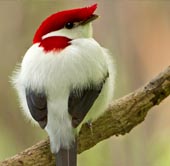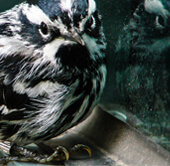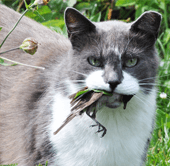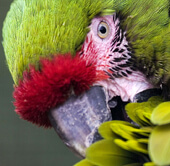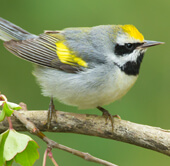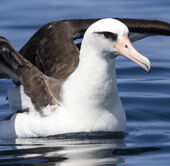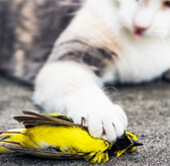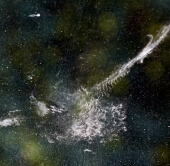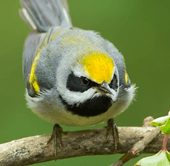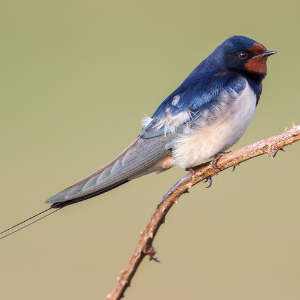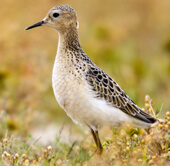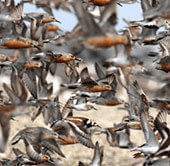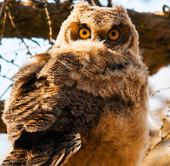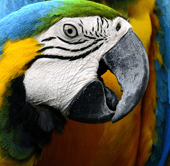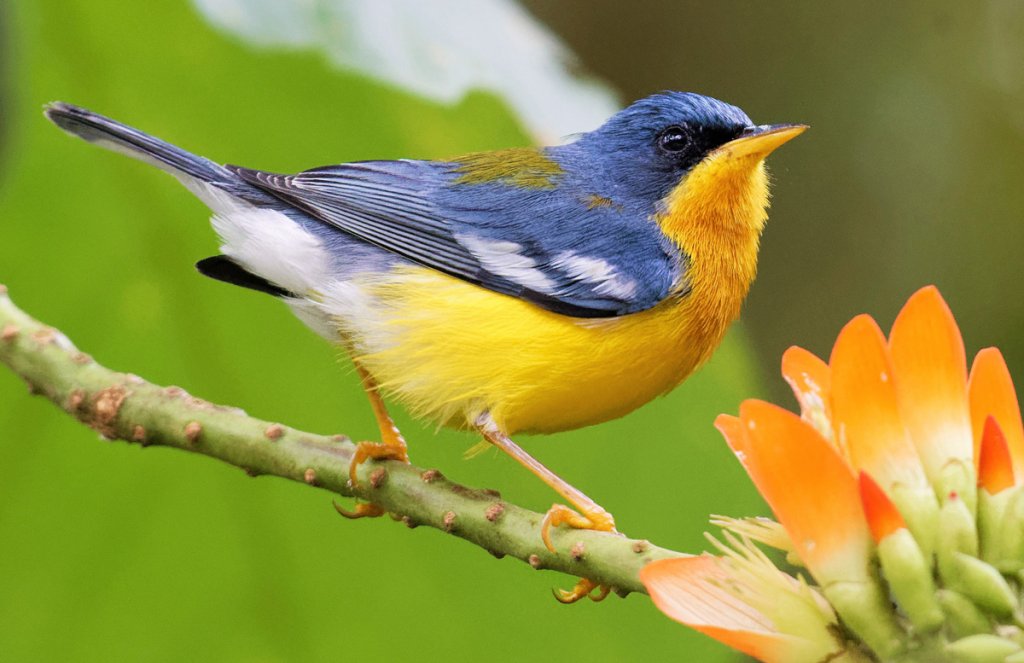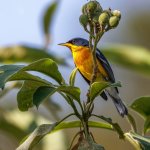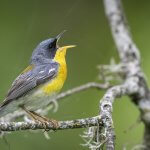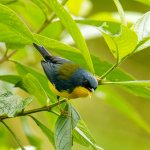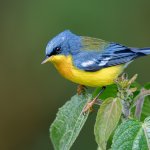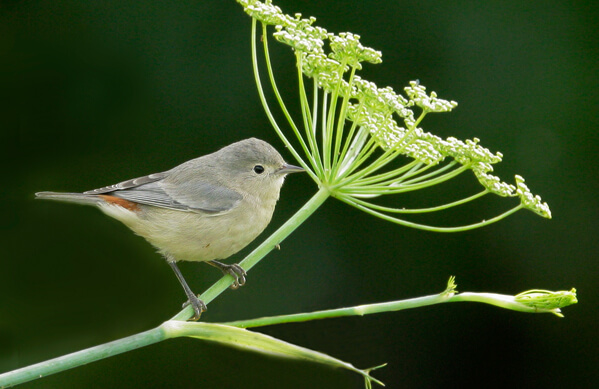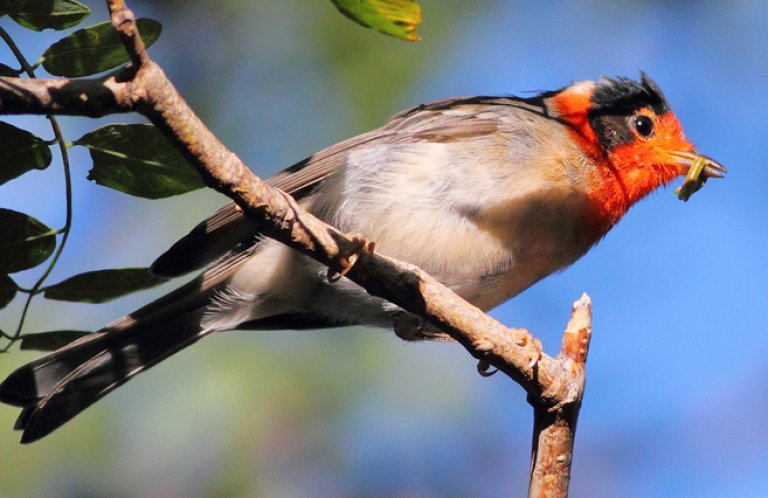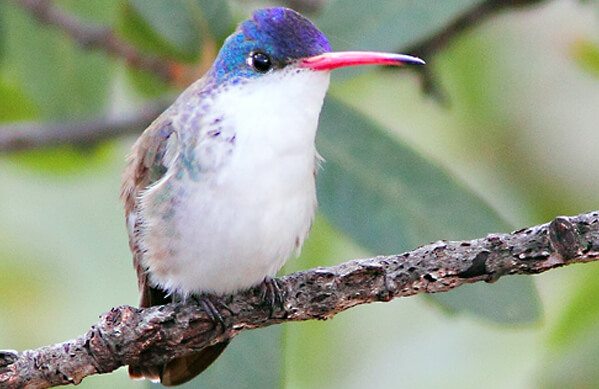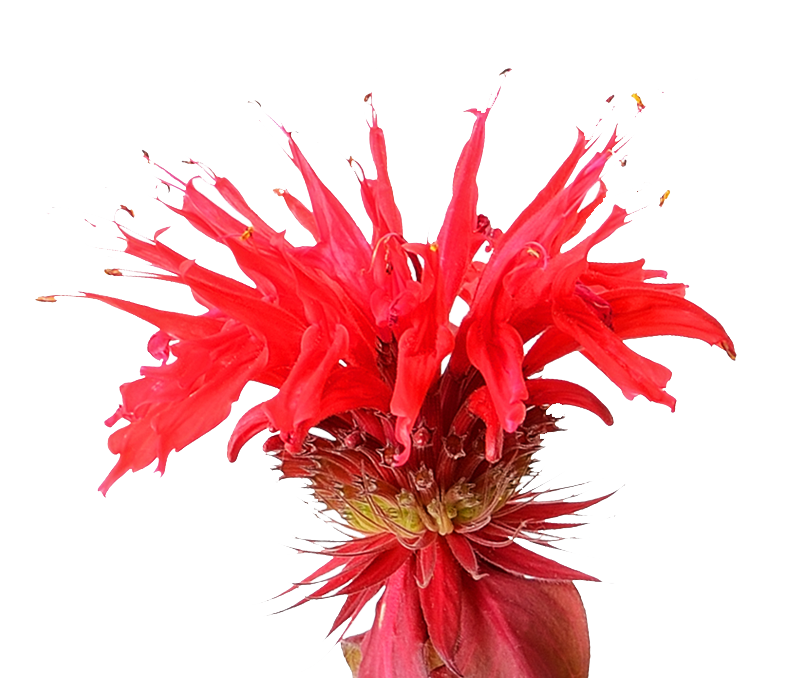About the Tropical Parula
The spritely, colorful Tropical Parula is closely related to the Northern Parula, and was considered a form of that warbler until updated genetic data provided enough evidence to split the two into separate species.
The Tropical Parula was initially called the “Olive-backed Parula” before receiving its current name, which gives a nod to its distribution in the New World. It has an especially evocative species name, pitiayumi, which is derived from a Guarani (Paraguayan) name meaning “little yellow chest.”
At first glance the Tropical Parula looks very similar to the Northern Parula, with blue-gray upperparts and head, a greenish patch on the upper back, yellow chest with white undertail coverts, and two white wing-bars.
However, a longer look shows several important differences that distinguish the Tropical Parula from its near relative. The Tropical Parula's yellow underparts are more extensive, with an orange wash on the throat and upper breast instead of the black-and-chestnut chest band of the Northern Parula. The male Tropical Parula has a black mask instead of a Northern Parula's white eye-arcs. Another notable difference is the Tropical Parula's bicolored bill that has a black upper and yellow lower mandible.
The female Tropical Parula is duller in color, with a gray, rather than black, face and only traces of orange on her throat and upper breast.
Nine subspecies of Tropical Parula are currently recognized, although ongoing study indicates that some of these groups may actually represent distinct species. Some scientists have already recognized one subspecies of Tropical Parula as a separate species.
The International Union for Conservation of Nature (IUCN) already recognizes one subspecies of Tropical Parula, Setophaga pitiayumi graysoni, as a separate species, which it calls the Socorro Parula. This subspecies is only found on Socorro Island, Mexico.
The American Ornithologists Union (now the American Ornithological Society) also recognized this subspecies in 1957, naming it the Grayson's Warbler.
More information is obviously needed on this subspecies of Tropical Parula, and on other subspecies that might actually represent separate species. Speciation is a complex process, from both a biological and scientific point of view!
Songs and Sounds
The male Tropical Parula sings two types of song: the first is an accelerating buzzy trill with a downslurred end note. The second song is more variable and complex, sounding almost wren-like. Each song likely has a different function, as seen in the Northern Parula.
Song, type 1:
Song, type 2:
Breeding and Feeding
During the winter, the Tropical Parula joins mixed-species feeding flocks. In Texas these flocks may include Ruby- and Golden-crowned Kinglets, Black-crested Titmouse, and Orange-crowned, Black-and-white, and Yellow-rumped Warblers. In the tropics, these mixed flocks may contain tanagers, euphonias, woodpeckers, and cotingas.
These birds may be seasonally monogamous. In resident populations, pairs stay together throughout the year.
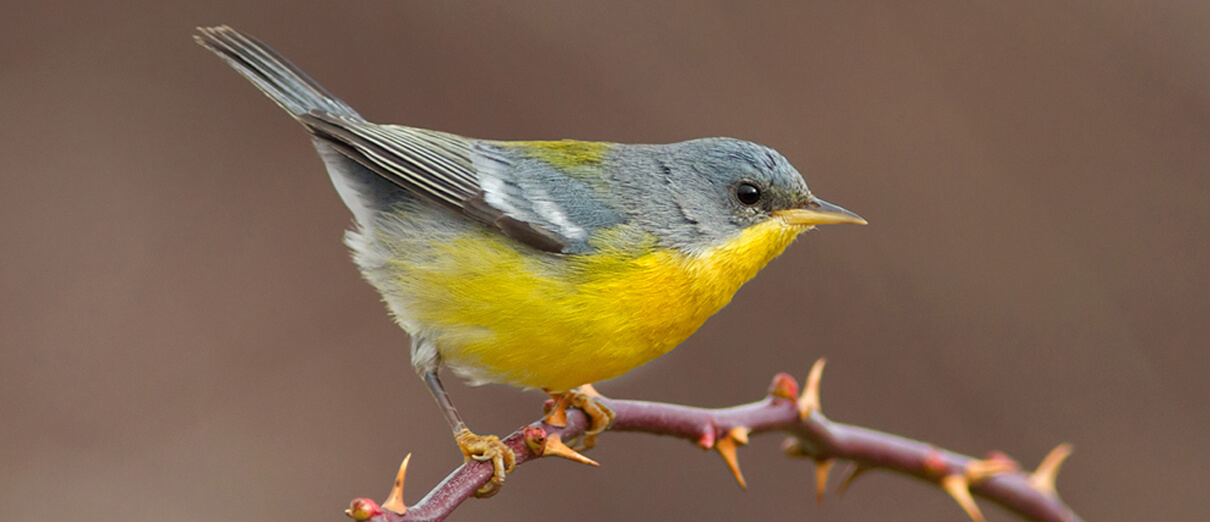
The female Tropical Parula chooses a nest site in an epiphyte-laden tree, usually six to 40 feet above the ground and towards the end of a branch. She hollows out a domed nest within a clump of epiphytes, lining it with plant fibers and animal hair. The nest has a side entrance.
Females lay a clutch of 2–4 brown-speckled white eggs, which she incubates herself for about two weeks. The male may bring her food while she incubates. Both parents feed the young, which fledge 10-12 days after hatching.
The Tropical Parula forages by gleaning along the undersides of leaves in the outer branches of the tree canopy, often hanging upside down to reach prey. It may also hover-glean to pick insects from leaves, and will sally out to hawk flying insects.
Region and Range
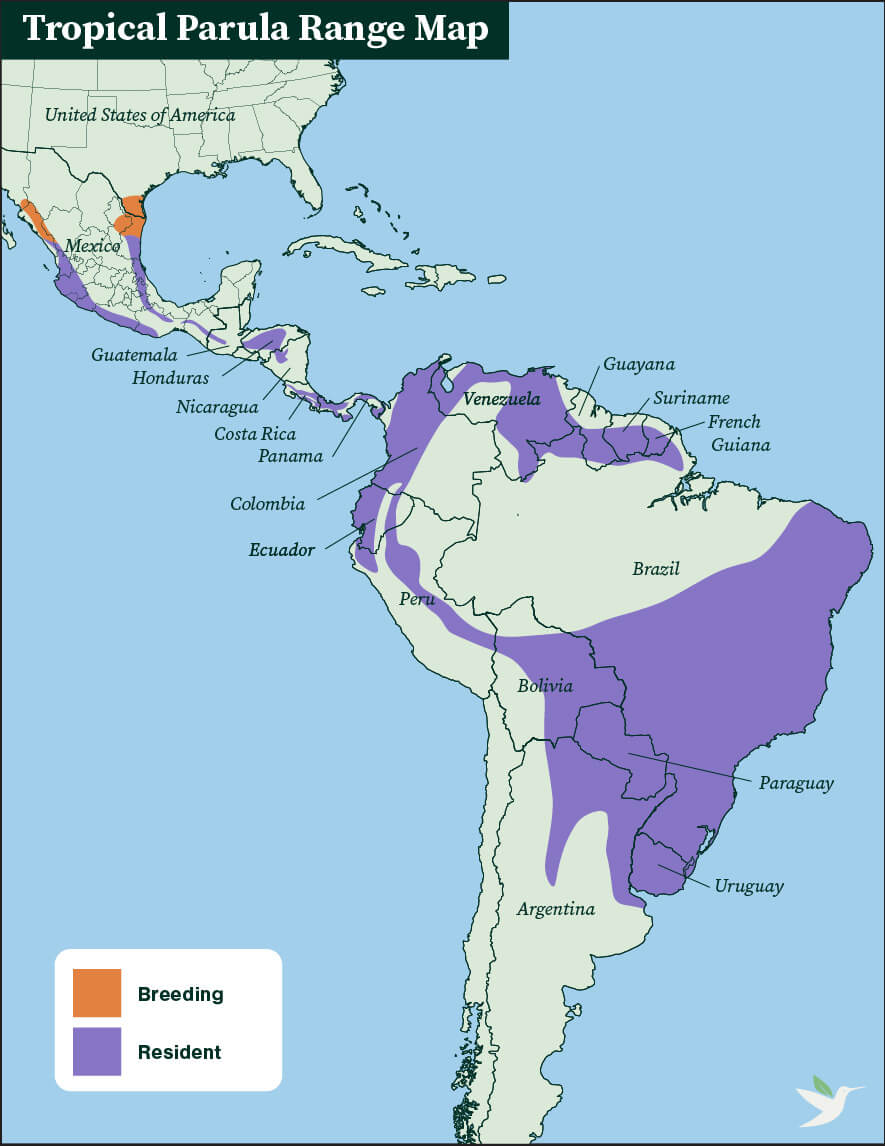
In the U.S., the Tropical Parula is found only in southern Texas. Most Tropical Parulas nesting in the U.S. are short-distance migrants, migrating to Mexico. These birds migrate short distances into Mexico, although some show post-breeding dispersal north and east along the Texas coast.
They are widespread and resident in the rest of its range, from Mexico through Central America to northern Argentina.
Nine subspecies of Tropical Parula are recognized, differing in body size, plumage color, and size of mantle patch.
Conservation
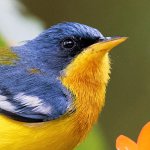
Help support ABC's conservation mission!
Agricultural expansion, urbanization, and deforestation threatens the Tropical Parula throughout its range.
The use of pesticides in agricultural areas may also harm this species.
Air pollution is also a concern, as epiphytes, an essential material for Tropical Parula nests, are especially sensitive to air quality.
Get Involved
Policies enacted by the U.S. Congress and federal agencies, such as the U.S. Fish and Wildlife Service, have a huge impact on migratory birds. You can help shape these rules for the better by telling lawmakers to prioritize birds, bird habitat, and bird-friendly measures. To get started, visit ABC's Action Center.
Living a bird-friendly life can have an immediate impact on migratory birds in the United States. Doing so can be as easy as adding native plants to your garden, avoiding pesticides, and keeping cats indoors. To learn more, visit our Bird-Friendly Life page.
American Bird Conservancy and our Migratory Bird Joint Venture partners have improved conservation management on more than 8.5 million acres of U.S. bird habitat — an area larger than the state of Maryland — over the last ten years. That's not all: With the help of international partners, we've established a network of more than 100 areas of priority bird habitat across the Americas, helping to ensure that birds' needs are met during all stages of their lifecycles. These are monumental undertakings, requiring the support of many, and you can help by making a gift today.

